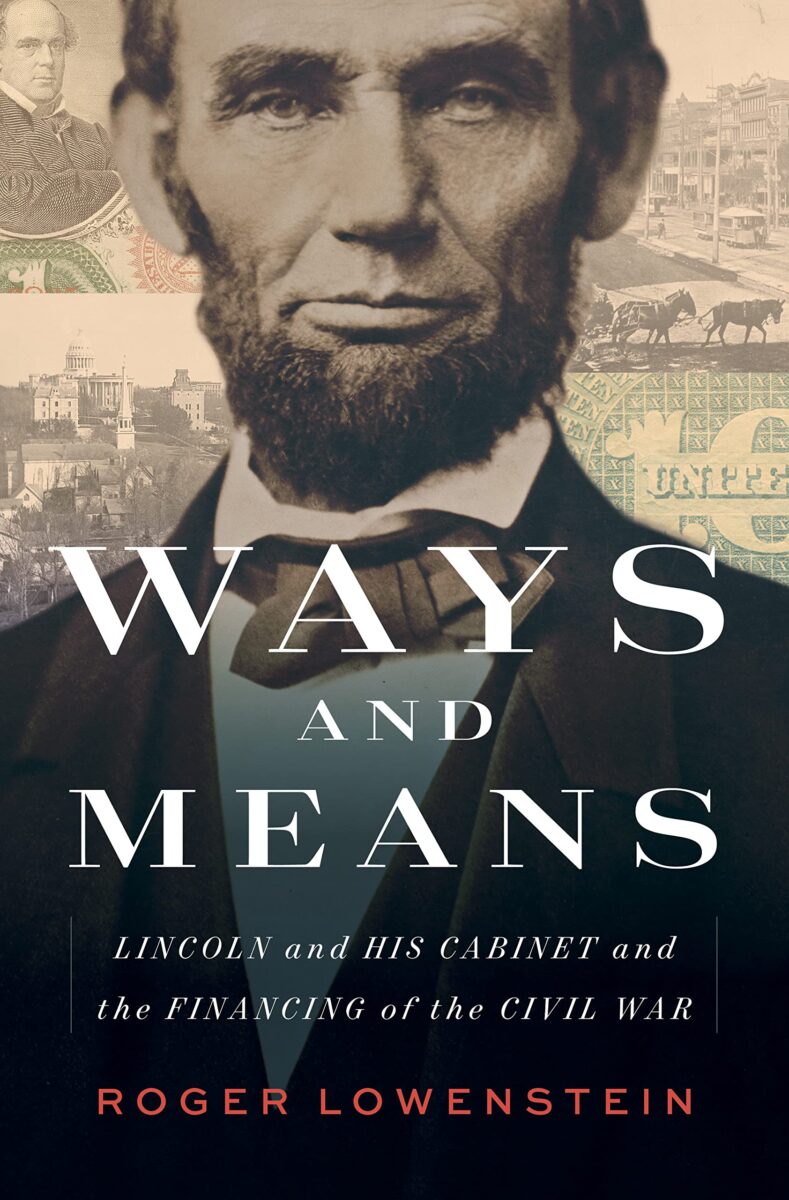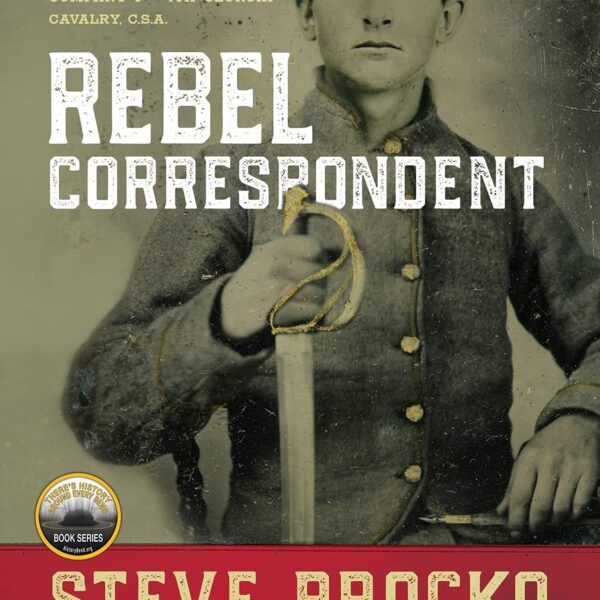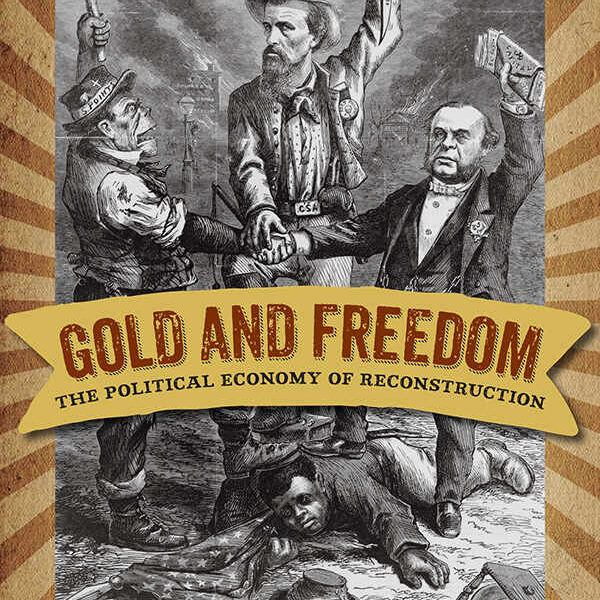Some have characterized economics as the dismal science. Roger Lowenstein didn’t get that memo. The author of critically acclaimed books on Wall Street and modern financial arrangements, Lowenstein has turned his considerable talents to a heretofore underappreciated aspect of the Civil War: namely, how the government of Abraham Lincoln, totally unprepared for a conflict of such magnitude, managed to raise unprecedented amounts of money to pay for it—and, in the process, initiated a revolution in government that laid the groundwork for the nation’s modern economic state.
Another trope is that writing about economics is almost as dismal as the science. Lowenstein didn’t get that memo, either. His narrative flows with a confident grace, guding readers through myriad financial schemes, government policies, and political intrigue with a minimum of technocratic jargon or cliché-ridden truisms. And he isn’t averse to sprinkling his prose with some appropriately employed pithy phrases that can bring a smile to the face of even the most reluctant reader. To wit: when describing how President Buchanan’s Treasury Secretary Howell Cobb financed government spending on the eve of the war, Lowenstein characterizes it as “government on a credit card.” On the Confederacy’s difficulty in raising funds to support the war, he concludes, “The southern people were willing to part with blood; with treasure, not so much.” Lowenstein calls the expectation that interest on Union bonds would be paid in gold, “an alchemy machine, a devise for turning paper into specie.” Still, Ways and Means rests on solid scholarship, not clever clauses.
Wars are expensive. In its early history, the United States government paid for small wars by asking an elite coterie of eastern financiers for loans to be repaid with interest. When Lincoln took office, he inherited a session crisis, the threat of armed rebellion, and a significant financial debt run up by the Buchanan administration. On his second day in office, Lincoln asked Treasury Secretary Salmon P. Chase for a report on the nation’s financial standing. Chases essentially replied that the nation was broke; it had no finances on which to stand. On the eve of the conflict, Lowenstein writes, “The United States had no authorization to tax its citizens, no government bank, no currency. The private banking system was atomized and weak, comprised of sixteen hundred banks, each answering to disparate state regulations.”
By 1863, Lowenstein reports that “Chase was burning through $37 million a month—for that era, a frightful sum—compared with revenue of barely $12 million a month.” Clearly, new sources of revenue had to be found.
Analyzing the progress of the war through an economic lens, Lowenstein examines the remedies devised by the Lincoln administration—remedies devised by Chase and some strong supporting players, including financier Jay Cooke. In 1861, Jay Cooke was a young partner in a newly formed financial house in Philadelphia; he and his brothers saw the war as a great financial opportunity. Cooke’s modern marketing ideas to sell bonds exuded confidence in the Union cause and helped him succeed beyond anyone’s expectations. Early on, he advertised in local newspapers and published the names of his small subscribers, using the power of patriotism to motivate others. He sent his agents door-to-door all over the country and, together with his brother Albert (and Senators William Pitt Fessenden and John Sherman), turned the financing of the Union war effort into a patriotic show of confidence.
Yet the government remained strapped for funds. Jay Cooke and his agents were having trouble marketing short term bonds (known as five-twenties) because military setbacks in the east steadily eroded public confidence. Chase told Lincoln the problem was Major General George B. McClellan. “The Treasury Secretary asserted that if the President were to dismiss McClellan, and take decisive action on slavery,” Lowenstein writes, “he, Chase, could ‘ensure that the price of United States bonds would soar within ten days, enabling the government to borrow.’” Lowenstein maintains that economic necessity helped drive both military decisions and political policy.
Lowenstein furnishes some fascinating sidebar chapters, including one he calls the “Forgotten Congress.” During the war, “the Thirty-Seventh Congress…enacted a blizzard of legislation that made the federal government, for the first time, a visible presence in the lives of ordinary Americans.” Between December 1861 and July 1862, Lowenstein concludes, the Congress “involved the federal government in agriculture, education, and land policy. It legislated an income tax and refocused the war’s purposes to include a frontal attack on slavery. It could almost be said that it created the government itself.” With reluctant southerners absent, Republican majorities in both houses created the Agriculture Department and passed the Land-Grant College Act, the Pacific Railway Act, and the amendment-laden Revenue Act. “The government founded in 1789 had been little more that a centralized coordinating body,” Lowenstein declares, but “in 1862 it began to exercise real power.”
What about the Confederacy? Lowenstein even finds room to report on its fundraising efforts. Hoping—ultimately in vain—that the power of cotton would secure loans from Europe to finance its war efforts, the Confederacy soon “faced considerable difficulties raising funds.” The southern economy was based on agriculture, and “the Confederacy had no hard cash, no real taxing system, and its only marketable assets (cotton and other crops) were marooned in the South.” With no hard currency, inflation plagued southern consumers almost from the war’s outset and, Lowenstein concludes, “growing scarcity presaged a frightening economic instability, a threat to the cherished social order.”
By the time Lincoln accepted Chase’s resignation from the Treasury Department on June 30, 1864, everything had changed. In a search for finding the ways and means to finance the conflict, these United States became the United States. The nation now had a national banking system, a system to tax its citizens, a universally recognized currency, and, despite a huge national debt, strengthened credit. It was, Lowenstein maintains, “a staggering transformation.” We are living with its legacy today.
Gordon Berg has authored numerous articles and reviews for popular Civil War periodicals. He writes from Maryland.





